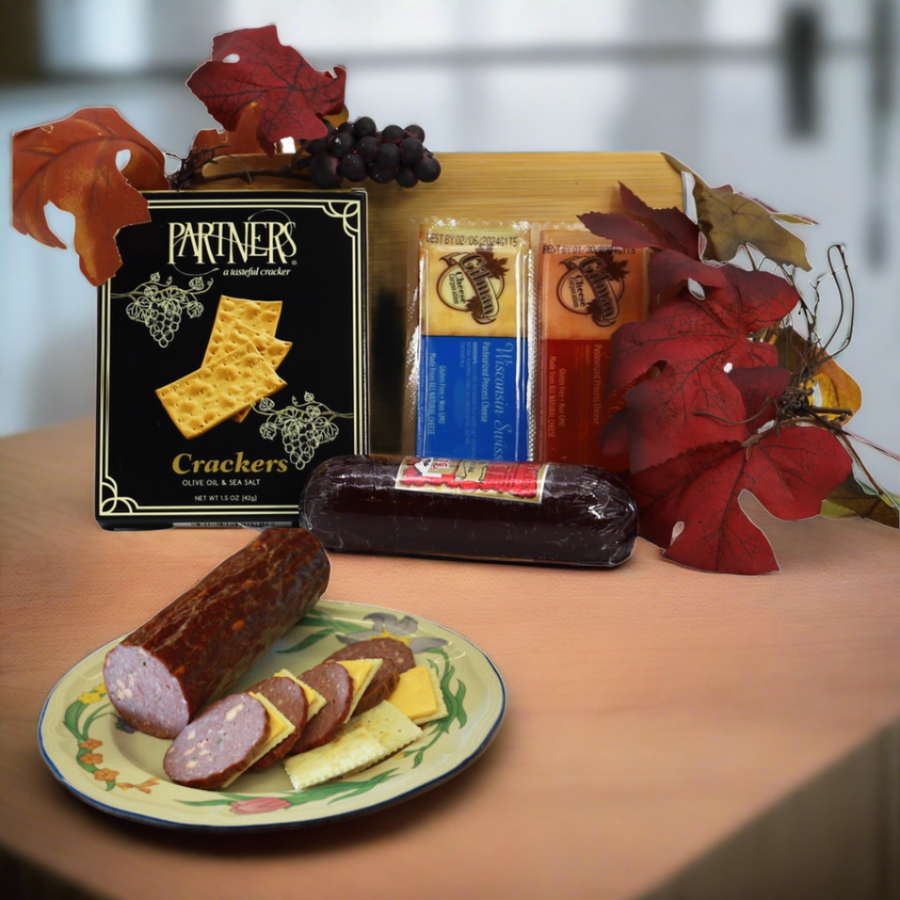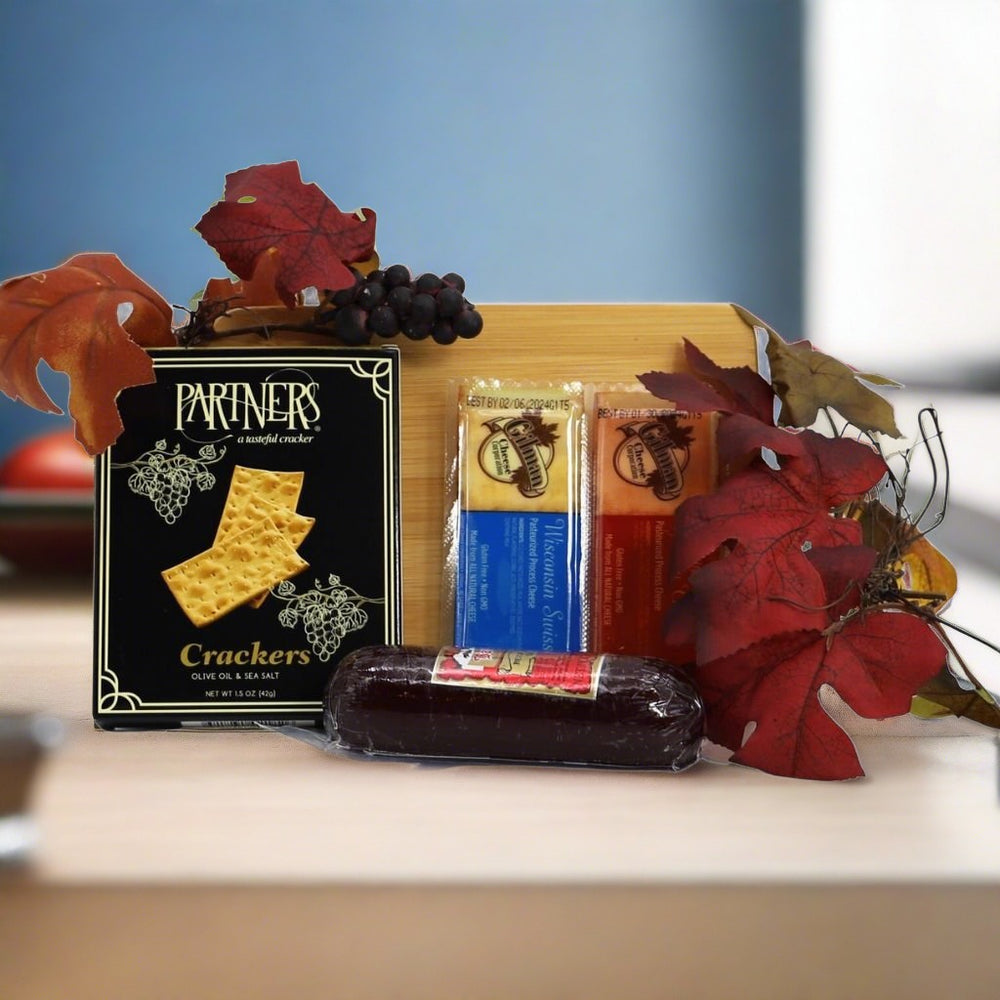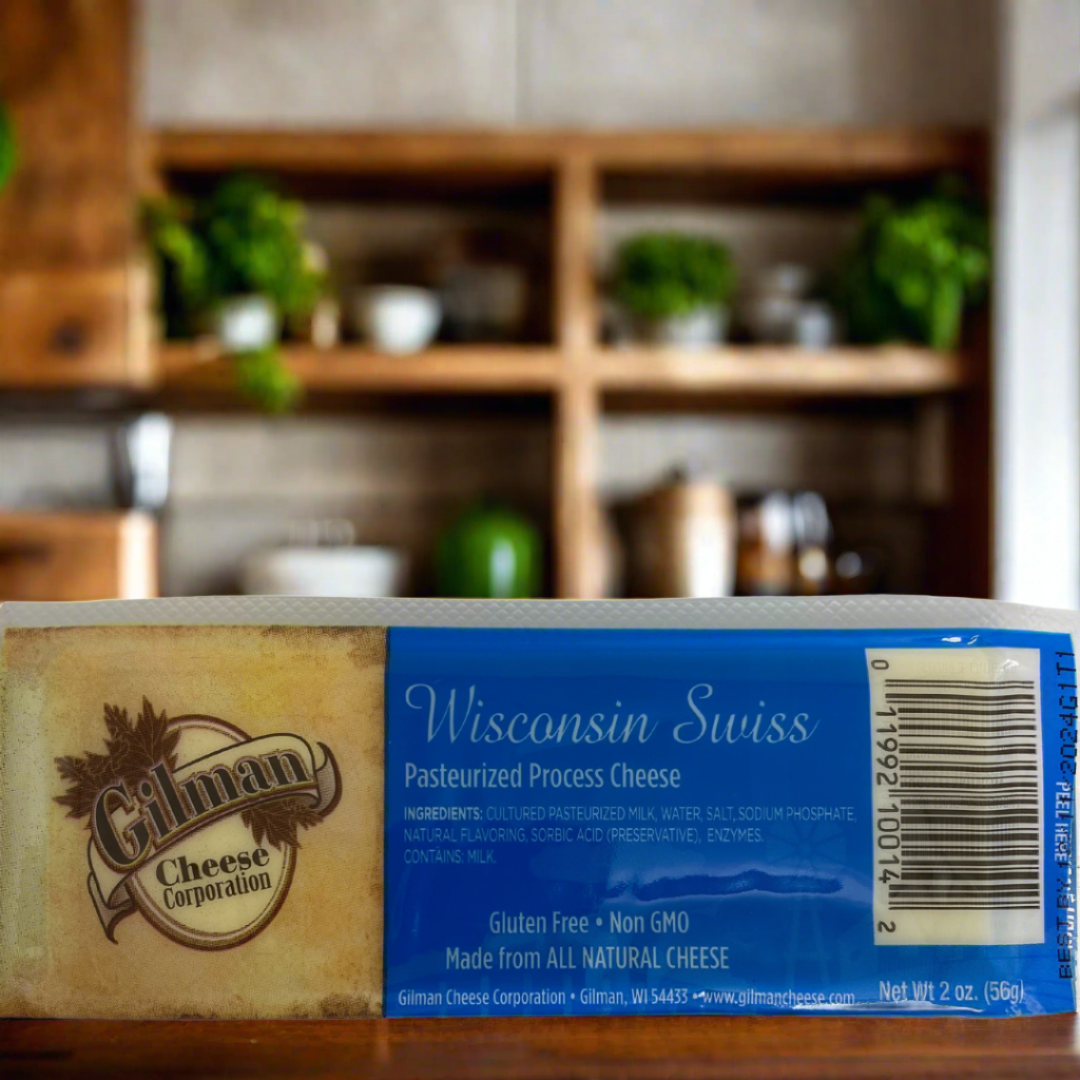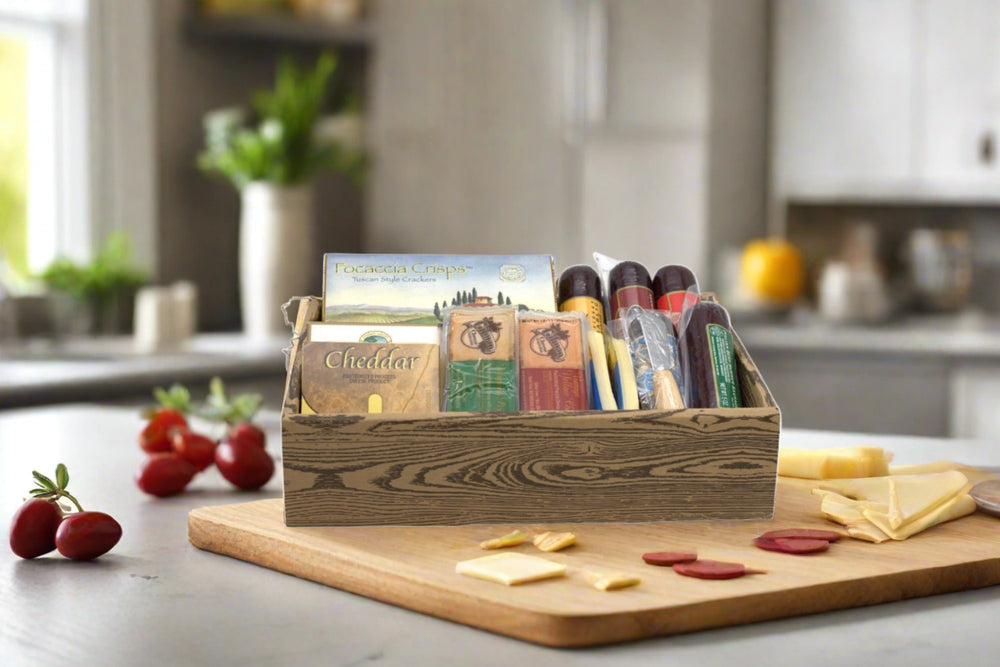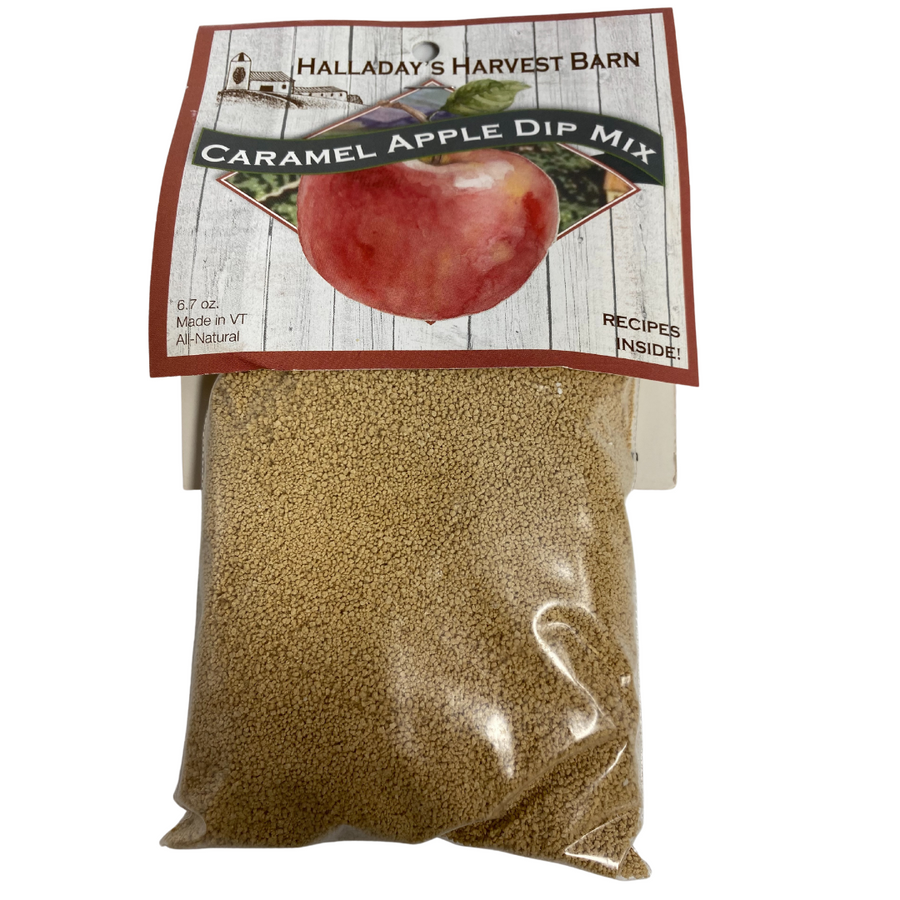Charcuterie 101: A Beginner's Guide to the Art of Cured Meats
The history of charcuterie
Charcuterie has been around for centuries, with its roots in France. The word "charcuterie" comes from the French words "chair cuite," which means "cooked flesh." In the past, before modern refrigeration, people had to find ways to preserve meat, and that's where charcuterie came in.
Types of cured meats

There are many different types of cured meats, each with its own unique flavor and texture. Some of the most popular types of cured meats include:
Salami
Salami is a type of cured sausage that is made from ground meat (usually pork) and spices. Also, It can be eaten raw or cooked, and it has a tangy, salty flavor.
Prosciutto
Prosciutto is a type of dry-cured ham that is typically made from the hind leg of a pig. It is sliced thinly and is often served as an appetizer or used as a topping on pizzas and sandwiches.
Pancetta
Pancetta is a type of Italian bacon that is cured with salt and spices. That is why, It is often used as a flavoring in soups and sauces, and it has a rich, savory flavor.
Bresaola
Bresaola is a type of air-dried beef that is typically served thinly sliced. Also, It has a deep, earthy flavor and is often served as part of a charcuterie board.
Understanding the curing process
The curing process is what transforms raw meat into delicious cured meats. There are two main methods of curing meat: dry curing and wet curing.
Dry curing
Dry curing involves coating the meat with a mixture of salt, sugar, and spices and then hanging it to dry in a temperature-controlled environment. The dry environment helps to draw out moisture from the meat, which helps to preserve it. So, over time, the salt and spices penetrate the meat, giving it a unique flavor.
Wet curing
Wet curing involves soaking the meat in a brine solution that contains salt, sugar, and spices. The meat is then hung to dry in a temperature-controlled environment. Wet curing is a faster method of curing meat, and it results in a milder flavor than dry curing.
Tools and equipment needed for charcuterie
Here are some of the essential items you'll need:
Meat grinder
A meat grinder is essential for grinding meat for sausages and other cured meats. Look for a grinder with different-sized grinding plates so that you can get the desired texture.
Sausage stuffer
A sausage stuffer is used to stuff ground meat into casings. Look for a stuffer with different-sized tubes so that you can make different sizes of sausages.
Curing chamber
A curing chamber is a temperature- and humidity-controlled environment where you can hang your cured meats to dry. Also, It is essential for dry curing.
Vacuum sealer
A vacuum sealer is used to seal your cured meats in airtight bags for storage. It helps to prevent spoilage and extends the shelf life of your cured meats.
Choosing the right cuts of meat

Look for cuts of meat that have a good balance of fat and meat. Fat is important because it helps to keep the meat moist during the curing process. Some of the best cuts of meat for charcuterie include pork shoulder, beef brisket, and duck breasts.
Preparing the meat for curing
Before you can start curing your meat, you'll need to prepare it. So, Here are the steps you'll need to follow:
1. Trim off any excess fat or connective tissue from the meat.
2. Cut the meat into pieces that are small enough to fit into your grinder.
3. Grind the meat using your meat grinder, using the appropriate-sized grinding plate for the texture you want.
4. Mix the ground meat with the curing salt and any other spices you want to use.
5. Stuff the meat into casings or shape it into the desired shape.
Curing methods - dry and wet curing
There are two main methods of curing meat: dry curing and wet curing.
Dry curing
Dry curing involves coating the meat with a mixture of salt, sugar, and spices and then hanging it to dry in a temperature-controlled environment. It can take several weeks or even months for the meat to fully cure. Dry curing is best for large cuts of meat, such as hams and pancetta.
Wet curing
Wet curing involves soaking the meat in a brine solution that contains salt, sugar, and spices. The meat is then hung to dry in a temperature-controlled environment. Wet curing is faster than dry curing and is best for smaller cuts of meat, such as bacon and sausages.
Aging and storing cured meats
After your meat has finished curing, you'll need to age it for a period of time to allow the flavors to develop fully. The length of time you age your meat will depend on the type of meat and the curing method you used. Once your meat has aged, you can store it in a vacuum-sealed bag in the refrigerator or freezer.
Pairing cured meats with wine and cheese
Charcuterie is often served with wine and cheese, and there are some classic pairings that work well together. Here are a few ideas:
Salami and Chianti
The spicy, salty flavor of salami pairs well with the fruity, tannic flavor of Chianti.
Prosciutto and Pinot Grigio
The delicate, slightly sweet flavor of prosciutto pairs well with the light, crisp flavor of Pinot Grigio.
Bresaola and Malbec
The earthy, rich flavor of bresaola pairs well with the bold, fruity flavor of Malbec.
Charcuterie board ideas and presentation tips
Creating a beautiful charcuterie board is an art form in itself. Here are some tips for creating a stunning presentation:

Use a variety of cured meats
Choose a variety of cured meats with different textures and flavors. This will give your guests a range of options to choose from.
Add fruits and nuts
Fruits and nuts are a great complement to cured meats. Consider adding grapes, figs, or almonds to your charcuterie board.
Use a variety of cheeses
Choose a variety of cheeses with different textures and flavors. Soft cheeses like brie and goat cheese pair well with cured meats.
Use different types of crackers and breads
Choose a variety of crackers and breads to serve with your charcuterie board. Consider adding some crusty baguette slices or some seeded crackers.
Common mistakes to avoid in charcuterie making
Making charcuterie can be a bit tricky, and there are some common mistakes that beginners often make. Here are a few things to avoid:
Using the wrong amount of salt
Using too much or too little salt can affect the flavor and texture of your cured meats. Be sure to follow the recipe carefully and measure your ingredients accurately.
Not using the right equipment
Using the wrong equipment can result in poorly cured meats. Be sure to invest in a good-quality meat grinder, sausage stuffer, and other essential tools.
Not aging the meat long enough
Aging your meat is essential for developing the flavors fully. Be sure to follow the recommended aging time for your specific type of meat.
Resources and recipes for charcuterie beginners
Here are a few places to start:
Charcuterie: The Craft of Salting, Smoking, and Curing by Michael Ruhlman
This book is a comprehensive guide to the art of charcuterie, with detailed instructions and recipes for making your own cured meats.
The Art of Charcuterie by John Kowalski
This book is a great resource for beginners, with step-by-step instructions for making your own charcuterie at home.
Conclusion
Charcuterie is an art form that has been around for centuries, and it's a great way to make the most of every part of an animal. With the right tools, techniques, and ingredients, you can create your own delicious cured meats and charcuterie boards that will impress your guests. So why not give it a try? With a bit of practice and patience, you may just become a charcuterie master.
Latest Stories
Gift Basket Ideas for Christmas
Get inspired by our budget-friendly gift basket ideas and spread joy to your loved ones this Christmas.
Gift Basket Ideas
Whether you're shopping for a birthday, anniversary, or just want to show someone you care, these gift basket ideas will make a lasting impression.
The Charm of Gifts in a Basket
Looking for the perfect gift that combines thoughtfulness, creativity, and surprise? Look no further than a gift basket!


